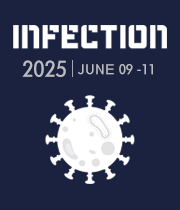Title : Decentralizing oxygen availability and use at primary care level for children under-five with severe pneumonia, at 12 health centers in Ethiopia: A pre-post non-experimental study
Abstract:
Statement of the Problem: Pneumonia is the leading infectious cause of death in children worldwide, accounting for 15% of all deaths in children under the age of five. Hypoxemia is a major cause of death in patients suffering from pneumonia. There is strong evidence that using pulse oximetry and having reliable oxygen sources in healthcare facilities can reduce deaths due to pneumonia by one-third. Despite its importance, hypoxemia is frequently overlooked in resource-constrained settings. Aside from the limited availability of pulse oximetry, evidence showed that healthcare workers did not use it as frequently to generate evidence-based decisions on the need for oxygen therapy. As a result, the goal of this study was to assess the availability of medical oxygen devices, operating manuals, guidelines, healthcare workers’ knowledge, and skills in the practice of hypoxemia diagnosis and oxygen therapy in piloted health centers of Ethiopia.
Methodology: A pre-post non-experimental study design was employed. An interviewer-administered questionnaire was used to collect primary data and review medical record charts. A chi-square test with a statistical significance level of P<0.05 was used as a cut-off point for claiming statistical significance.
Findings: Eighty-one percent of healthcare workers received oxygen therapy training, up from 6% at baseline. As a result of the interventions, knowledge of pulse oximetry use and oxygen therapy provision, skills such as oxygen saturation and practices of oxygen therapy have significantly improved among healthcare workers in the piloted Health Centers. In terms of availability of oxygen devices (e.g., cylinders, concentrators, and pulse oximeters) in the facilities, seven (58%) facilities did not have any at baseline, but due to the interventions, all facilities were equipped with oxygen devices.
Conclusion & Significance: Given the prevalence of pneumonia and hypoxemia, a lack of access to oxygen delivery devices, as well as a lack of knowledge and skills among healthcare workers in the administration of oxygen therapy, may represent an important and reversible barrier to improving child survival. Therefore, scaling up clinician training, technical support, availability of oxygen devices, guidelines, manuals, strengthening maintenance schemes, and close monitoring of healthcare workers and health facilities is strongly advised.


